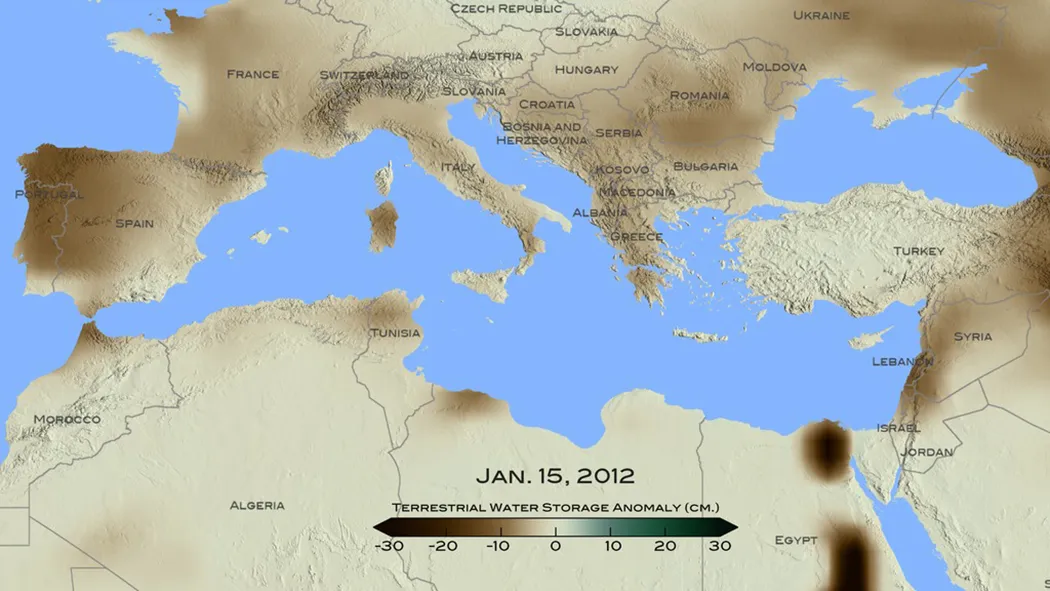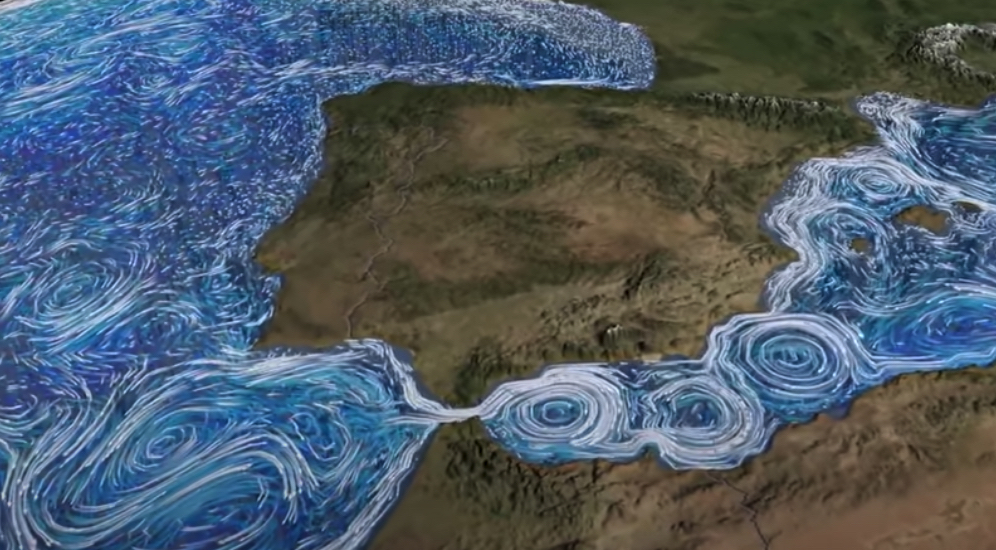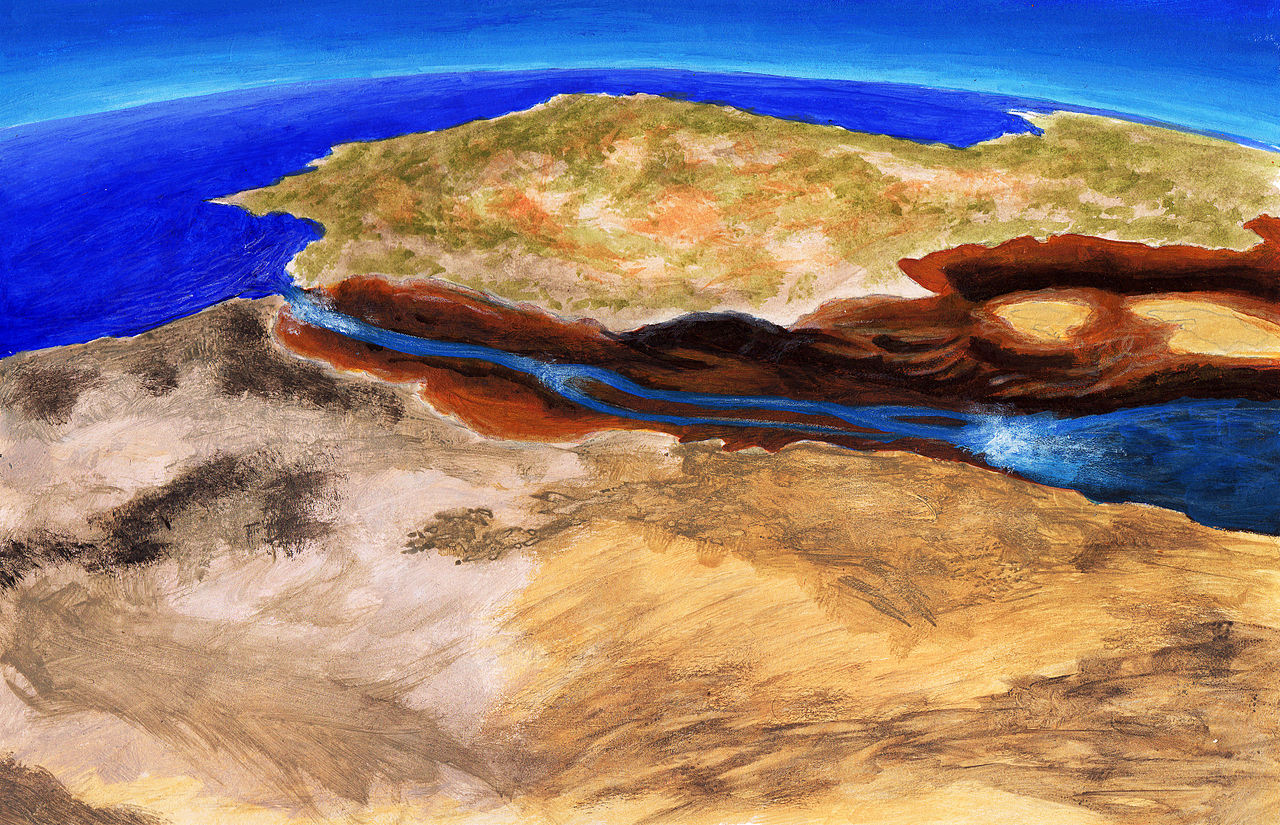The Mediterranean Sea holds a significant place in the world as a vital body of water, teeming with diverse marine life and serving as the cradle of ancient civilizations. Surprisingly, it has not always existed in its current form. Geological evidence reveals that the Mediterranean Sea has experienced periods of drying up throughout its history. This article delves into the causes of these occurrences, the process of its desiccation, and the remarkable phenomenon of its refilling. Published on nhahangmonhue.vn, this piece explores the intriguing geological history of the Mediterranean Sea, addressing the question: ‘Was the Mediterranean Sea ever dry?
Contents
The Drying Up of the Mediterranean Sea
Evidence from the Earth’s Layers
The geological evidence for a dry Mediterranean Sea is indeed compelling and provides insight into the history of this iconic body of water. During the Messinian period, which occurred approximately 5.96 to 5.33 million years ago, the Mediterranean Sea was devoid of water. This is evident from the presence of evaporites in the sediments from that time period. Evaporites are minerals that form when water evaporates, and their abundance in the eastern Mediterranean Sea reinforces the theory that the sea was once a dry basin.
Furthermore, the presence of submarine canyons in the Mediterranean Sea adds another layer of evidence to support the hypothesis of a dry Mediterranean. These deep valleys, carved into the sea floor by rivers, indicate that the Mediterranean Sea was once a river valley. It is believed that when the sea dried up, rivers flowed through the basin, creating these canyons that still exist today.
| Year | Event |
|---|---|
| 5.96 to 5.33 million years ago | Messinian period: Mediterranean Sea dries up |
| 5.33 million years ago | Strait of Gibraltar opens: Mediterranean Sea begins to refill |
| Present | Mediterranean Sea continues to exist as a vital body of water |
Overall, the geological evidence for a dry Mediterranean Sea is overwhelming and provides a glimpse into the dynamic nature of this body of water. The sediments from the Messinian period and the presence of submarine canyons offer clear proof that the Mediterranean Sea has experienced periods of drying up in the past. These findings help us better understand the history of the Mediterranean Sea and the changes it has undergone over millions of years.
Reasons for the Drying Out
The desiccation of the Mediterranean Sea remains a mystery, with scholars debating the exact causes behind this phenomenon. Two main theories have emerged to explain this dry period in the sea’s history.
The first theory suggests that tectonic activity played a significant role in the separation of the Mediterranean Sea from the Atlantic Ocean. Specifically, it is believed that the Strait of Gibraltar was closed off due to tectonic shifts, preventing the exchange of water between the two bodies of water.

On the other hand, the second theory proposes that a combination of factors, including tectonic activity, climate change, and falling sea levels, led to the desiccation of the Mediterranean Sea. As the Strait of Gibraltar narrowed, the Mediterranean Sea became more arid due to changing climatic conditions. Additionally, the decreasing sea level caused the sea to become shallower, making it more susceptible to evaporation.
Despite ongoing debates, one thing remains clear – the Mediterranean Sea was once a dry basin. Tectonic activity, climate change, and falling sea levels all played a role in the desiccation of this iconic body of water. Further research is needed to fully understand the complex interplay of factors that led to this drastic change in the Mediterranean’s history.
Refilling the Mediterranean Sea
Around 5.96 to 5.33 million years ago, during what is known as the Messinian period, the Mediterranean Sea experienced a dramatic event – it dried up. This phenomenon, known as the Messinian Salinity Crisis, occurred due to tectonic activity that closed off the connection between the Mediterranean Sea and the Atlantic Ocean.
As a result, the Mediterranean Sea gradually evaporated, leaving behind vast salt flats and exposing the sea bed. The once thriving marine ecosystem was replaced by a barren, salty landscape. This period of desiccation lasted for several hundred thousand years, until around 5.33 million years ago, when the Strait of Gibraltar opened, allowing water from the Atlantic Ocean to rush back into the Mediterranean Sea.
The Reflooding of the Mediterranean Sea
The opening of the Strait of Gibraltar marked the beginning of the reflooding of the Mediterranean Sea. The rush of water from the Atlantic Ocean slowly filled the basin of the Mediterranean, carving out new shorelines and depositing new sediments. Over the course of several thousand years, the Mediterranean Sea reached its current size and shape.
The reflooding of the Mediterranean Sea had a profound impact on the climate of the region. The newly reformed sea helped to moderate temperatures and brought much-needed water to the surrounding lands. This shift in climate and water availability played a crucial role in shaping the development of human civilization in the Mediterranean region.
Today, the sediments left behind by the reflooding of the Mediterranean Sea serve as a reminder of this ancient event. They provide valuable evidence for scientists studying the history of the Mediterranean region and the geological processes that have shaped it over millions of years. The reflooding of the Mediterranean Sea remains a fascinating and significant chapter in the ongoing story of Earth’s dynamic and ever-changing landscapes.
Proof of a Desertified Mediterranean Sea
Evidence from the Earth’s History
The geological evidence for a dry Mediterranean Sea during the Messinian period is truly fascinating. Sediments from this period, ranging from 5.96 to 5.33 million years ago, provide clear indicators that the Mediterranean Sea was completely devoid of water. One of the most compelling pieces of evidence comes from the presence of evaporites, which are minerals formed through the evaporation of water. These evaporites are abundant in the Mediterranean Sea, particularly in the eastern region, serving as a tangible reminder of a once barren sea.
Additionally, the existence of submarine canyons further solidifies the hypothesis of a dry Mediterranean Sea. These deep, narrow valleys etched into the sea floor by rivers paint a vivid picture of a time when rivers meandered through the now-submerged basin. The presence of these canyons serves as a testament to the ancient rivers that once flowed through the region, carving out their path and shaping the landscape in a way that is still visible to this day.
Overall, the geological evidence for a dry Mediterranean Sea is not only compelling but also offers a glimpse into a prehistoric world that existed millions of years ago. Through the remnants left behind in the form of evaporites and submarine canyons, we are able to piece together a story of a time when the Mediterranean Sea was a dry basin waiting to be filled with water once again.
Fossil Evidence
The evidence from fossils found in the Mediterranean Sea strongly supports the theory that this body of water was once dry. Fossils of terrestrial animals, such as elephants, lions, and tigers, have been discovered in the region, indicating that the Mediterranean Sea was once a land bridge connecting Europe and Africa.
One of the most significant events in the history of the Earth was the desiccation of the Mediterranean Sea during the Messinian period, which occurred between 5.96 to 5.33 million years ago. This drying up of the sea had a significant impact on the climate of the Mediterranean region, leading to the evolution of new species of plants and animals.
The opening of the Strait of Gibraltar around 5.33 million years ago marked the beginning of the refilling of the Mediterranean Sea. This event allowed water from the Atlantic Ocean to flow into the basin, gradually restoring the sea to its present-day form.

Overall, the evidence of fossils found in the Mediterranean Sea provides compelling support for the theory that this body of water was once dry. The presence of terrestrial animal fossils and the geological timeline of the region’s drying and refilling highlight the dynamic nature of Earth’s history and the interconnectedness of landmasses and bodies of water.
Hypotheses on the Drying Up of the Mediterranean Sea
Earth’s Plate Movements
One theory posits that the Mediterranean Sea underwent a dramatic transformation due to tectonic activity. This activity resulted in the closure of the Strait of Gibraltar, cutting off the Mediterranean from the Atlantic Ocean. Without the ability to exchange water with the Atlantic, the Mediterranean began to slowly dry up over time.
Geological studies have provided evidence to support this theory, revealing that the Strait of Gibraltar was once much narrower than it is today. This narrowing suggests that at some point in history, the strait may have closed off completely, leading to the desiccation of the Mediterranean Sea.
The desiccation of the Mediterranean Sea was a significant event that had far-reaching consequences. It had a profound impact on the climate of the Mediterranean region, leading to the evolution of new species of plants and animals adapted to the changing environment.
Overall, the closure of the Strait of Gibraltar and subsequent drying up of the Mediterranean Sea had a lasting impact on the Earth’s geology and biodiversity, providing insights into the dynamic and ever-changing nature of our planet.
Global Warming and Environmental Changes
One theory suggests that the desiccation of the Mediterranean Sea was a result of climate change during the Messinian period, which occurred approximately 5.96 to 5.33 million years ago. The Mediterranean region was significantly drier during this time, leading to an increase in evaporation rates in the Mediterranean Sea. As a result, the sea began to dry up, eventually becoming a vast, arid landscape.
This theory is supported by climate studies that have found evidence of the aridity in the region during the Messinian period. The dry conditions, coupled with the increased evaporation, are believed to have contributed to the desiccation of the Mediterranean Sea.
Around 5.33 million years ago, the Strait of Gibraltar opened, allowing water from the Atlantic Ocean to flow back into the Mediterranean Sea. This marked the beginning of the refilling process of the once-dried up sea.
Overall, the theory that climate change played a significant role in the desiccation of the Mediterranean Sea during the Messinian period is supported by evidence from climate studies and the geological timeline of the region. The opening of the Strait of Gibraltar later allowed the sea to refill, bringing an end to its arid phase.
A Blend of Factors
There are various theories about the desiccation of the Mediterranean Sea, with one prominent possibility being a combination of tectonic activity and climate change.
Tectonic activity, such as the shifting of tectonic plates and the formation of mountain ranges, may have played a crucial role in altering the flow of water into and out of the Mediterranean Sea. Changes in the Earth’s crust could have influenced the sea levels and led to a decrease in water supply, ultimately contributing to the desiccation of the sea.
Furthermore, climate change could have exacerbated the process of desiccation. Rising temperatures and changing weather patterns may have accelerated the evaporation of water from the Mediterranean Sea, further reducing its water levels. This ongoing climate change could have had long-lasting effects on the sea’s ecosystem, leading to the drying up of the once-thriving body of water.
It is possible that these factors worked in conjunction to lead to the desiccation of the Mediterranean Sea. The complex interplay between tectonic activity and climate change may have resulted in the gradual drying up of the sea, forever altering the landscape of the region. Further research and analysis are needed to fully understand the mechanisms behind this phenomenon and its implications for the future.
Potential Consequences of a Arid Mediterranean Sea
The implications of a dry Mediterranean Sea would have been catastrophic for the region and beyond. Without the vast body of water to provide moisture, the climate would have become extremely arid, leading to a significant decrease in vegetation and an increase in desertification. The loss of the Mediterranean Sea would have disrupted the delicate balance of ecosystems, causing widespread extinction of both terrestrial and marine species.
The marine ecosystem would have suffered greatly from the disappearance of the sea. The diverse array of marine life that once thrived in the Mediterranean would have faced extinction, leaving a void in the food chain and impacting the entire marine ecosystem.

The desiccation of the Mediterranean Sea was a pivotal event in Earth’s history, shaping the evolution of new species of plants and animals. As the sea dried up during the Messinian period, new adaptations and survival strategies would have emerged in order to cope with the harsh, arid conditions.
The opening of the Strait of Gibraltar 5.33 million years ago marked the beginning of the refilling of the Mediterranean Sea. This event was a turning point, allowing for the re-establishment of the sea and the gradual recovery of its ecosystems.
In conclusion, the loss of the Mediterranean Sea would have had far-reaching implications for the climate, ecology, and biodiversity of the region. The refilling of the sea following its desiccation demonstrates the resilience of nature and the ability of ecosystems to recover from catastrophic events.
Closing Statement
The Mediterranean Sea stands as a crucial element within the intricate web of the global ecosystem, serving as a vibrant hub of marine life and a vital source of sustenance for countless species. Its history of ebbing and flowing, of drying up and refilling, is a powerful testament to the enduring force of geological processes that shape our planet.
Through centuries of evolution and transformation, the Mediterranean Sea has weathered the test of time, serving as a prime example of the Earth’s ability to adapt and regenerate in the face of change. Its ever-shifting landscape is a poignant reminder that even the most iconic landmarks are subject to the immense forces at play within the natural world.
As the Mediterranean Sea continues to evolve and redefine itself, it stands as a resolute symbol of resilience, showcasing the ongoing cycle of destruction and renewal that characterizes our planet. It serves as a poignant reminder that we must tread lightly upon the Earth, recognizing and respecting the delicate balance of nature that sustains all life. In its fluidity and constancy, the Mediterranean Sea inspires us to embrace change and accept the inherent impermanence of our surroundings, reminding us of our interconnectedness with the natural world.
Exploring its geological history prompts us to question: ‘Was the Mediterranean Sea ever dry?’ This inquiry delves into the depths of its past, offering insights into the profound transformations this iconic body of water has undergone over millennia.